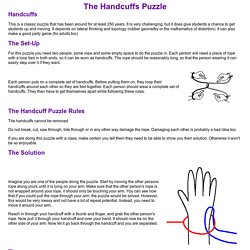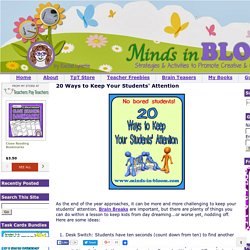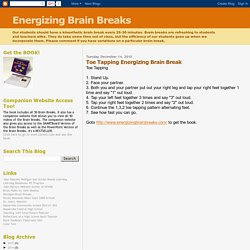

The Handcuffs Puzzle. Handcuffs This is a classic puzzle that has been around for at least 250 years.

It is very challenging, but it does give students a chance to get students up and moving. It depends on lateral thinking and topology (rubber geomettry or the mathematics of distortion). It can also make a good party game (for adults too). The Set-Up For this puzzle you need two people, some rope and some empty space to do the puzzle in. The Handcuff Puzzle Rules The handcuffs cannot be removed. Do not break, cut, saw through, bite through or in any other way damage the rope. If you are doing this puzzle with a class, make certain you tell them they need to be able to show you their solution.
The Solution Tips If you are showing this one to a class, some students will say that the puzzle is easy and they know how to do it. People very rarely solve this one without assistance. If you are working with a single pair, you can lead them to the solution using a rubber band. Further Information Further Activities.
20 Three-Minute Brain Breaks. Wednesday's guest post about why kids need to move from pediatric occupational therapist Loren Shlaes was so popular that I decided to follow it up with a list of Brain Breaks you can use with your students.

These are great to use anytime your students are feeling restless and are struggling to pay attention. Most of these will only take a few minutes, and then you can get back to the lesson with your students ready to focus on the lesson at hand.5-4-3-2-1. In this simple game, students stand up and the teacher (or leader) has them do five different movements in descending order. For example the teacher would say: "Do fivejumping jacks, spin around four times, hop on one foot threetimes, walk all the way around the classroom two times, give your neighbor one high-five (pausing in between each task for students to do it).Trading Places Have students stand behind their pushed-in chairs. Please note that I did not come up with all of these out of my own head. 20 Ways to Keep Your Students' Attention.
As the end of the year approaches, it can be more and more challenging to keep your students' attention.

Brain Breaks are important, but there are plenty of things you can do within a lesson to keep kids from day dreaming...or worse yet, nodding off. Here are some ideas:Desk Switch: Students have ten seconds (count down from ten) to find another desk to sit in that is in a different part of the room than his or her normal desk. Students stay in that desk for the rest of the lesson.
Why? Two reasons, first switching desks gets them up and moving. Did you get a new idea? AISD: Physical Education and Health Education. The red color represents how the brain has been “turned on” after 20 minutes of moderate physical activity.

Below are links to several brain break videos. Brain Breaks are designed to be short in duration, which allows students a chance to move and refocus their attention. The following videos can be watched in AISD only: Elementary Focus (K-5) AISD Brain Break Activities Energizers: Classroom-based Physical Activities (K-5) physical activities are integrated with academic concepts Over 20 activities each for K-2 and for 3-5. Energizing Brain Breaks: Guns and Roses Brain Break. Energizing Brain Breaks: Energizing Brain Break Crab. Energizing Brain Breaks: Toe Tapping Energizing Brain Break. Toe Tapping 1.

Stand Up.2. Face your partner.3. Both you and your partner put out your right leg and tap your right feet together 1 time and say "1" out loud.4. Tap your left feet together 3 times and say "3" out loud.5. Tap your right feet together 2 times and say "2" out loud.6. WHAT ARE ENERGIZING BRAIN BREAKS? The Sid Shuffle - Ice Age: Continental Drift.